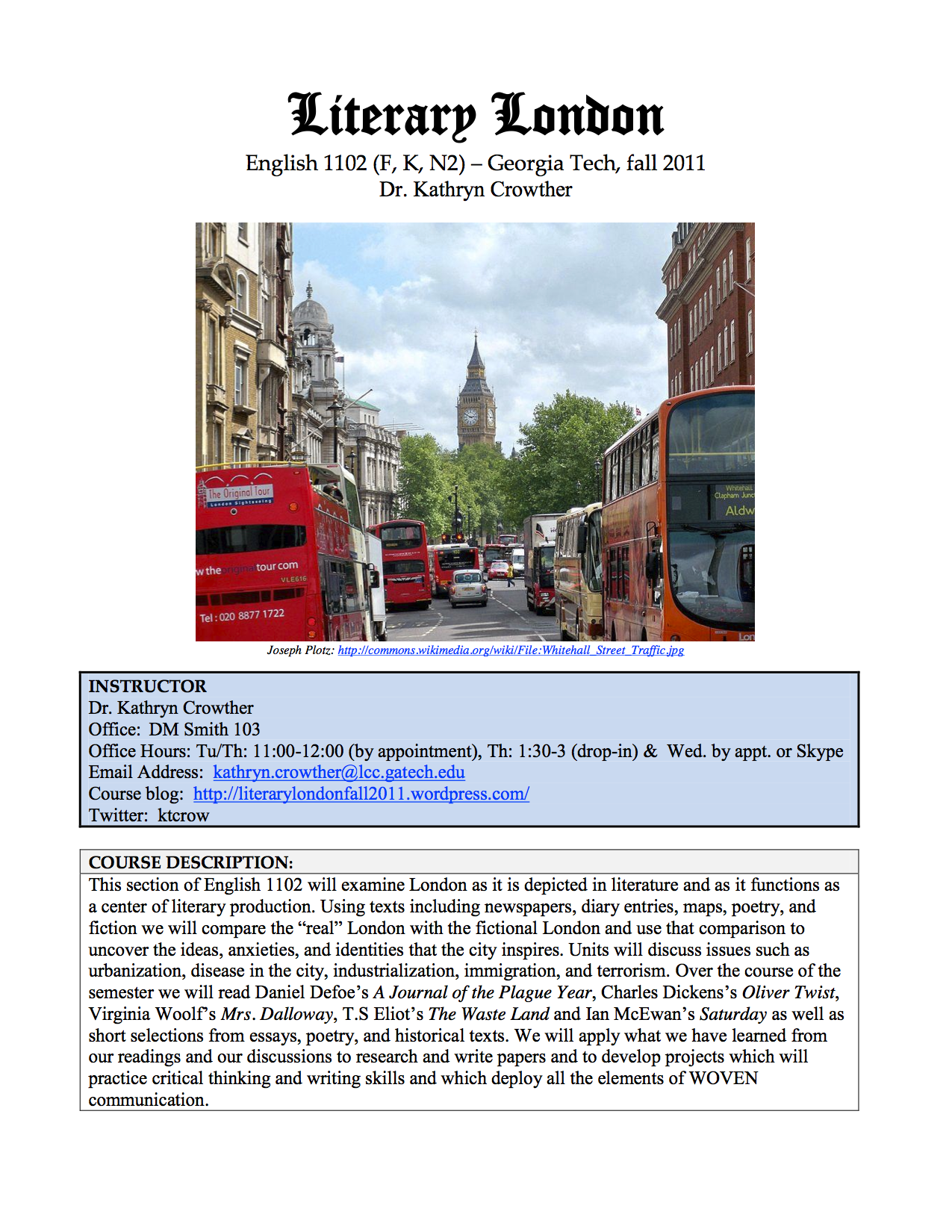It’s that time of year and we’re all thinking “syllabus.” At least we were about a week or two ago – now with classes underway most of us have finalized our syllabi and distributed them to our new classes.
Or did you? I didn’t.
Well, distribute them that is. I’ve been trying to run a paperless classroom for the past year here at Georgia Tech and, barring a few specific assignments, I make it my policy not to print out and copy paper versions of any course document. Instead, I make a Word and .pdf version available on T-Square, Tech’s own CMS, and give students the option to print it out themselves, or to refer to the online version when they need to. I also put a copy of the weekly reading/assignment schedule on the front page of our course T-Square site so that the students see it every time they log in. The nice thing about putting it there is that I can easily modify it if our schedule changes or if I decide to tweak an assignment or add a reading. Because, as I think is the case for most instructors, my schedule is always somewhat fluid, and I like to make the course dynamic and responsive, allowing me to change things based on the particular direction a class is taking.
In fact, the more I think about it, the more the static paper syllabus, doesn’t make sense, especially considering the multimodal emphasis that we place on communication here at Tech. Shouldn’t our syllabi be dynamic, multimodal artifacts that communicate more than just the course expectations and requirements?
Other professors are thinking the same thing, as Jason Jones of Profhacker discovered when he put out a call for “visually creative approaches to the syllabus. The results, as he describes in his follow-up post were impressive, most of them using visual and web design principles to make the document colorful, eye-catching, and persuasive.
I fill mine with colorful images, organizing tables, and external links to relevant documents, though — as you can see from the first page of my English 1102 syllabus for this semester  — it still mostly resembles the typical syllabus of old. Indeed, it would make more sense to make the syllabus truly dynamic, as Mark Sample brings up in the comments to the Profhacker post, and make it a webpage that can be modified and expanded as the course progresses. It’s becoming more common for professors to house their course documents on wikis or blogs, making the most of the multi-media environment to create syllabi that are fluid, changing, and visually appealing.
— it still mostly resembles the typical syllabus of old. Indeed, it would make more sense to make the syllabus truly dynamic, as Mark Sample brings up in the comments to the Profhacker post, and make it a webpage that can be modified and expanded as the course progresses. It’s becoming more common for professors to house their course documents on wikis or blogs, making the most of the multi-media environment to create syllabi that are fluid, changing, and visually appealing.
In fact, it seems only logical that we should adapt our syllabi to reflect the multimodal communication methods that we are teaching — what better way to teach, than to practice what we preach?
What do your syllabi look like? Tell us about your ideas for innovative, multimodal syllabi in the comments!
